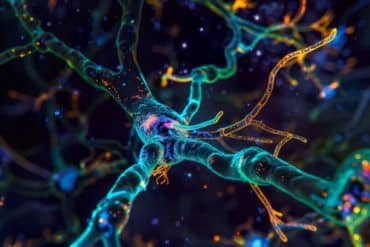Summary: Genetic differences contribute to both an increased risk of certain types of chronic pain and a reduction in the size of specific brain regions.
Source: University of Queensland
Genetic factors partly explain the link between brain structure and chronic pain, according to University of Queensland-led research.
This research is a step towards understanding the complex relationship between the brain and human genome in how they influence and contribute to chronic pain—the leading cause of disability worldwide.
Dr. Scott Farrell from UQ’s RECOVER Injury Research Centre said chronic pain affected around one in five Australian adults, while musculoskeletal disorders had the highest expenditure across disease groups in the country’s healthcare system.
“By identifying the underlying biological causes of chronic pain, we hope to improve the diagnosis, treatment of and health outcomes for sufferers of this highly debilitating condition,” Dr. Farrell said.
“Differences in brain structure have previously been reported in people with chronic pain.
“Our research shows for the first time that this association is partly due to individual differences in people’s DNA.”
Dr. Farrell said the team found genetic differences contributed to both an increased risk of certain chronic pain types and a reduction in size of specific brain regions.
“A decrease in size of certain brain regions was thought to be a consequence of chronic pain, however we found that reduced thickness in one particular area, the insular cortex, may contribute to a higher risk of chronic abdominal pain,” he said.
“This result was quite unexpected because prior clinical studies suggested changes in brain structure occur after the onset of chronic pain.
“The application of statistical genetic methods to large-scale pain and brain imaging data has shed new light on clinical pain research.”
The insular cortex is also known to be involved in a range of functions including empathic pain perception, visceral sensation, taste, emotional processing and individuals’ internal perceptions of their body.
The study used UK Biobank genetic data from nearly 200,000 people with various chronic pain conditions and a separate cohort of 34,000 people who had undergone scans measuring the size of different brain regions.

The various chronic pain conditions included neck, shoulder, back, hip, knee, abdominal and widespread chronic pain.
“This research builds on several other large genetic studies that delivered findings in mental health and neurological disorders, which are often compounded in people with chronic pain,” Dr. Farrell said.
“We are conducting further analyses to determine the genetic causal relationships across many clinical, lifestyle and psychosocial factors known to be associated with chronic pain, to help identify the underlying factors for clinical translation.”
The research team included Dr. Farrell and Professor Michele Sterling from UQ’s RECOVER Injury Research Centre; Drs Trung Thanh Ngo and Gabriel Cuéllar-Partida from UQ Diamantina Institute; Adrián Campos, Pik-Fang Kho and Dr. Miguel Rentería from QIMR Berghofer; and Dr. Rutger de Zoete from The University of Adelaide.
About this pain research news
Author: Press Office
Source: University of Queensland
Contact: Press Office – University of Queensland
Image: The image is in the public domain
Original Research: The findings will appear in Brain






